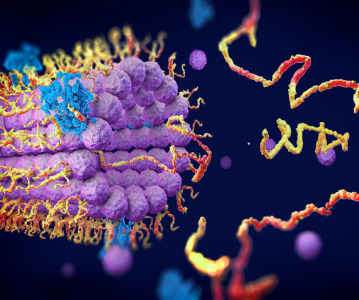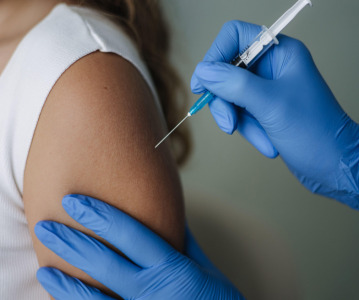Lilly's Taltz shows promise for patients with active psoriatic arthritis

Demonstrated significant improvements in disease signs and symptoms at 24 weeks among patients with active psoriatic arthritis who had prior inadequate response or intolerance to TNF inhibitors.
Eli Lilly has announced that patients with active psoriatic arthritis (PsA) who had inadequate response to one or two TNF inhibitors or were intolerant of TNF inhibitors treated with Taltz (ixekizumab) achieved significant improvement in signs and symptoms of their disease at 24 weeks when compared to placebo. Detailed results of the SPIRIT-P2 study, a pivotal Phase III trial, will be presented in an oral presentation today during the Annual European Congress of Rheumatology (EULAR) 2017, taking place June 14-17, in Madrid. Results from the SPIRIT-P2 study were also recently published in The Lancet in May 2017.
"Psoriatic arthritis is a chronic, progressive disease that affects more than 37 million people worldwide, and can cause a range of signs and symptoms, including pain, swelling and stiffness of the joints that can lead to impaired physical function, as well as itchy and painful skin plaques," said Dr. Lotus Mallbris, global brand development leader, Taltz, Eli Lilly and Company. "We are pleased this data will be presented at the Annual European Congress of Rheumatology (EULAR) 2017, as it represents an invaluable opportunity to foster discussion among experts from around the world on the importance of new treatments for this debilitating disease."
Study DesignThe SPIRIT-P2 study evaluated the safety and efficacy of Taltz (80 mg every 4 weeks or every 2 weeks, following a 160-mg starting dose) compared to placebo after 24 weeks in patients with active PsA who were previously treated with TNF inhibitors and had an inadequate response to one or two TNF inhibitors or were intolerant to TNF inhibitors. Patients were required to have a diagnosis of active PsA for at least 6 months and at least three tender and three swollen joints.
In this study, the primary endpoint was the percentage of patients achieving at least a 20% reduction in a composite measure of disease activity, as defined by the American College of Rheumatology (ACR20). This study also evaluated secondary endpoints including ACR50 and ACR70, which represent 50% and 70% reductions in disease activity; improvement in physical function as assessed using the Health Assessment Questionnaire Disability Index (HAQ-DI); and improved skin clearance as measured by the Psoriasis Area Severity Index (PASI).
Taltz Demonstrated Significant Improvements in Disease Signs and SymptomsPatients treated with either dosing regimen of Taltz demonstrated significant improvements at 24 weeks compared with placebo in disease activity of PsA.
At 24 weeks, patients achieved the following response rates:
Patients treated with either dosing regimen of Taltz also experienced significant improvements compared with placebo in other key secondary measures, including physical function as assessed by the HAQ-DI and skin clearance in patients with at least 3% body surface area of skin involvement as measured by PASI 75, PASI 90 and PASI 100 at 12 weeks and 24 weeks. A PASI 75 score indicates at least a 75% reduction in a patient's plaque psoriasis from the patient's baseline assessment, while PASI 90 reflects a 90% reduction. PASI 100 represents a 100% reduction and reflects complete skin clearance.
"Many patients with psoriatic arthritis have tried a variety of therapies and have either lost response over time, had an inadequate response or been intolerant of therapy," said Associate Professor Peter Nash, lead author, University of Queensland, Queensland, Australia. "If approved, ixekizumab may provide physicians with a new option in this difficult-to-treat patient population."
Related News
-
News A Day in the Life of a Start-Up Founder and CEO
At CPHI we work to support Start-Up companies in the pharmaceutical industry and recognise the expertise and innovative angles they bring to the field. Through our Start-Up Programme we have gotten to know some of these leaders, and in this Day in the ... -
News Biopharmaceutical manufacturing boost part of new UK government budget
In their national budget announced by the UK Labour Party, biopharmaceutical production and manufacturing are set to receive a significant boost in capital grants through the Life Sciences Innovative Manufacturing Fund (LSIMF). -
News CPHI Podcast Series: The power of proteins in antibody drug development
In the latest episode of the CPHI Podcast Series, Lucy Chard is joined by Thomas Cornell from Abzena to discuss protein engineering for drug design and development. -
News Amgen sues Samsung biologics unit over biosimilar for bone disease
Samsung Bioepis, the biologics unit of Samsung, has been issued a lawsuit brought forth by Amgen over proposed biosimilars of Amgen’s bone drugs Prolia and Xgeva. -
News CPHI Podcast Series: Why we need to consider women in clinical trials
The latest episode of the CPHI Podcast Series with Lucy Chard covers women's health, specifically women's representation in clinical trials, the associated bias, and the impacts on health for this population. -
News US FDA does not approve MDMA therapy for PTSD, requests more data
The MDMA-based therapeutic developed by Lykos Therapeutics, a California-based Public Benefit Corporation (PBC), has been reviewed and unapproved by the US FDA. The regulator has requested additional phase III trial data for further safety and efficacy... -
News Novartis and Viatris latest facing lawsuit over HeLa cell misuse
Global pharmaceutical companies Novartis and Viatris are the latest hit with a lawsuit claim pertaining to alleged misuse of the ‘HeLa’ cell line from the estate of woman whose cancerous tissue cells were taken without consent. -
News Sanofi invests billions into Frankfurt insulin production site
French pharmaceutical company Sanofi have announced an investment of EUR1.3 billion at their existing BioCampus site in Frankfurt am Main for the expansion of insulin production.
Position your company at the heart of the global Pharma industry with a CPHI Online membership
-
Your products and solutions visible to thousands of visitors within the largest Pharma marketplace
-
Generate high-quality, engaged leads for your business, all year round
-
Promote your business as the industry’s thought-leader by hosting your reports, brochures and videos within your profile
-
Your company’s profile boosted at all participating CPHI events
-
An easy-to-use platform with a detailed dashboard showing your leads and performance



.png)

.png)
.png)
.png)